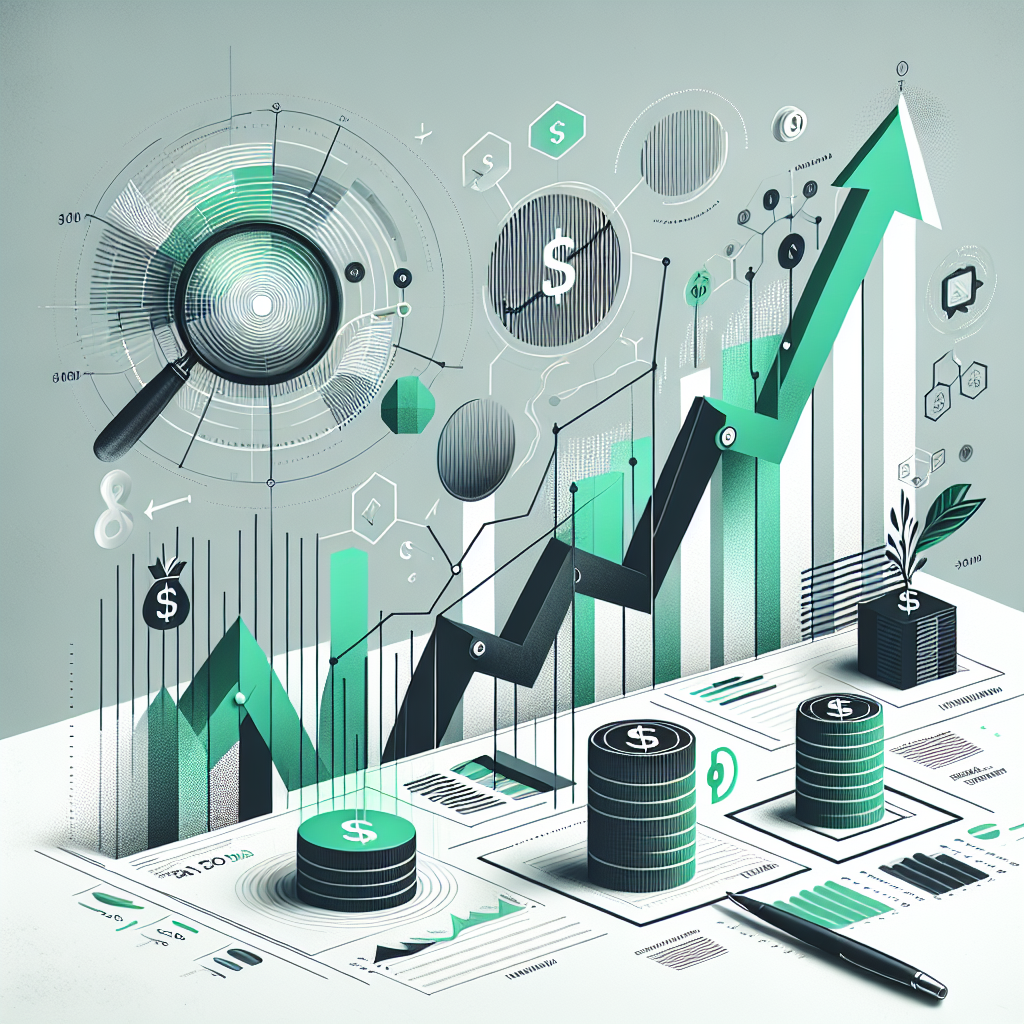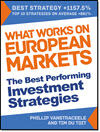Taxes can quietly eat away at your investment returns, slowing down your portfolio’s growth. This article shows you how to minimize "tax drag"—the hidden cost of taxes on your gains.
You'll learn smart strategies like tax-loss harvesting, using tax-advantaged accounts, and placing the right investments in the right accounts. Plus, you'll discover how to avoid emotional tax mistakes that could cost you money.
By making your portfolio more tax-efficient, you can grow your wealth faster and keep more of your hard-earned profits.
Estimated Reading Time: 6 minutes
Tax-Efficient Investing: How to Minimize Tax Drag and Maximize Returns
When you think about your investment costs, you probably focus on things like broker fees or fund charges. But there’s an even bigger cost lurking in your portfolio—taxes. Taxes can quietly eat away at your returns, and over time, this can have a huge impact on how much your portfolio grows.
Tax drag is simply the tax you pay when selling a stock at a profit. The more taxes you pay, the slower your portfolio grows. The good news is that with a few smart strategies, you can minimize the taxes you pay and keep more of your gains.
In this article, I’ll show you how to make your portfolio more tax-efficient so you can get the most out of your investments.
Understanding Tax Drag: How Taxes Affect Your Investments
Taxes on your investments create something called "tax drag". It’s called drag because it slows down how fast your money can grow. Every time you sell a stock for a profit or receive a dividend, you might have to pay taxes. Over time, these taxes reduce your portfolio’s overall value.
Let’s say you have two identical portfolios.
One is taxed each year on dividends and capital gains, and the other isn’t. After 20 years, the taxed portfolio is worth much less than the tax-free one, even though both earned the same returns.
This is why understanding tax drag is important. If you can lower the taxes you pay, you can speed up the growth of your investments.
Click here to start finding ideas that EXACTLY meet your investment strategy.
Always Check with Your Tax Advisor First
Please check with your tax advisor before you implement any of these strategies. I am not a tax advisor and the tax situation in your country is definitely different. These are just general ideas to discuss with your tax advisor.
The Impact of Dividends and Capital Gains Taxes
Dividends and capital gains taxes can take a big bite out of your returns. When you own a stock that pays dividends, those payments are often taxed as income. And when you sell a stock for more than you paid for it, that profit (called a capital gain) is taxed too.
Different countries have different rules on how they tax dividends and capital gains. In some places, dividend income is taxed at a higher rate than capital gains. This means that reinvesting dividends isn’t always as good for your portfolio as it seems, because part of that dividend gets lost to taxes before you can reinvest it.
To minimize the impact of taxes on dividends, you can consider holding dividend-paying stocks in tax-advantaged accounts, where your money can grow tax-free or tax-deferred.
Strategies for Minimizing Capital Gains Taxes
One of the best ways to lower your taxes is to use a strategy called tax loss harvesting. This means selling stocks that have lost value to offset the taxes you’d pay on gains from stocks that have gone up.
It’s like turning a losing stock into a win, or at least a partial win, because you can use that loss to reduce your tax bill.
Timing matters too. If you sell a stock for a profit right before the end of the tax year, you’ll lock in a taxable gain. But if you wait until the new year, you might be able to find other losses to offset that gain, or even avoid the tax for another year.
This gives you more control over when you pay taxes.
Tax-Efficient Investment Vehicles: Where to Hold Your Investments
Where you hold your investments can make a huge difference in how much tax you pay. Tax-advantaged accounts, like retirement accounts, can help shield your investments from taxes.
You can put money into these accounts, and your investments grow without being taxed until you take the money out.
So, what should you hold in these accounts?
Investments like bonds or high-dividend stocks are great for tax-sheltered accounts because they generate income that would normally be taxed. On the other hand, low-turnover funds or ETFs, which don’t produce a lot of taxable events, are better suited for taxable accounts.
By using tax-efficient funds in the right accounts, you can minimize taxes and maximize returns.
International Tax Differences: Understanding Global Taxation on Investments
If you’re investing internationally, tax rules get tricky. Different countries tax dividends, capital gains, and interest income in different ways. For example, some countries have high taxes on foreign dividends, and you might have to pay taxes twice—once in the country where the company is based (withholding taxes), and again in your own country.
The good news is that many countries have tax treaties that reduce or eliminate double taxation.
If you’re investing in foreign stocks, make sure you know the tax rules and whether a treaty can help lower your tax bill. This is one area where having a good tax advisor who understands international investing can really pay off.
Make sure your bank or broker can reclaim these taxes for you. This service mostly has a minimum dividend amount limit and a fee is charged to do the processing of the claim for you.
The Psychology of Tax-Efficient Investing: Avoiding Emotional Mistakes
Taxes can make you emotional when it comes to your investments. Perhaps you don’t want to sell a winning stock because you don’t want to pay taxes, or maybe you hold on to a losing stock because you hope it will bounce back. But letting emotions guide your decisions can lead to bigger tax bills and lower returns.
The key to avoiding these emotional traps is to focus on the bigger picture. Taxes are just one part of your investment strategy. Sometimes it’s worth paying taxes on a winning stock if you think the money can be better invested elsewhere. And sometimes it’s smart to sell a losing stock if it can lower your taxes.
The trick is to stay disciplined and make decisions based on strategy, not emotion. Do not let the tax tail wag the investment dog.
Conclusion: Take Control of Your Investment Taxes for Maximum Returns
Reducing your tax bill is one of the best ways to keep more of your gains.
By understanding tax drag, using strategies like tax loss harvesting, and holding the right investments in the right accounts, you can minimize the impact of taxes on your portfolio.
Remember, small tax savings today can lead to much bigger returns over time. So, take a look at your portfolio and see where you can make changes to be more tax-efficient.
Whether you're a new investor or a seasoned pro, these strategies can help you grow your money faster and keep more of it in your pocket. Start making your investments more tax-efficient today!
Click here to start finding ideas that EXACTLY meet your investment strategy.
FREQUENTLY ASKED QUESTIONS
1. What is tax drag, and why should I care?
Tax drag is the hidden cost of taxes eating away at your investment returns. Every time you sell a stock for a profit or receive dividends, you may owe taxes. Over time, this slows down how fast your money grows. If you minimize tax drag, your portfolio can compound faster and be worth much more in the long run.
2. How can I lower taxes on my dividends?
If you invest in dividend-paying stocks, those dividends are often taxed as income. One way to reduce this is by holding dividend stocks in tax-advantaged accounts, or another tax-deferred account. That way, your dividends can grow without being taxed right away. If you keep them in a regular taxable account, you’ll lose part of your returns to taxes each year.
3. When should I sell stocks to minimize taxes?
Timing matters. If you sell a stock for a gain right before the year ends, you’ll owe taxes on that gain for the current tax year. But if you wait until the new tax year, you might be able to offset that gain with other losses or even delay the tax bill for another year. Always check your overall tax situation before selling.
4. What is tax-loss harvesting, and how does it help?
Tax-loss harvesting is a smart way to lower your taxes. It works like this: If you sell a stock for a gain, you owe taxes. But if you also sell a losing stock, that loss can cancel out part (or all) of your taxable gain. It’s like turning a bad investment into a tax break. Some investors even sell a losing stock, take the tax benefit, and then buy a similar stock to stay invested.
5. Where should I hold different types of investments to be tax-efficient?
Some investments are better in tax-advantaged accounts, while others are fine in regular taxable accounts.
- Good for tax-advantaged accounts: Bonds and high-dividend stocks—since their income would otherwise be taxed yearly.
- Good for taxable accounts: Low-turnover index funds or ETFs—because they generate fewer taxable events. By placing the right investments in the right accounts, you keep more of your money.
6. How do international investments affect my taxes?
Investing internationally adds tax complexity. Some countries charge withholding taxes on dividends before you receive them. You might also have to pay taxes again in your home country. The good news? Some countries have tax treaties that reduce or eliminate double taxation. Before investing in high dividend yield foreign stocks, check if you can reclaim foreign taxes through your broker or tax advisor.
7. Should I hold onto a stock just to avoid taxes?
No. A good investment strategy should come first — taxes should never control your decisions. Holding onto a stock just to avoid taxes could backfire if the stock drops in value. Sometimes, it’s smarter to sell, pay the tax, and reinvest in a better opportunity. Focus on your long-term goals, not just your tax bill.
Click here to start finding ideas that EXACTLY meet your investment strategy.


